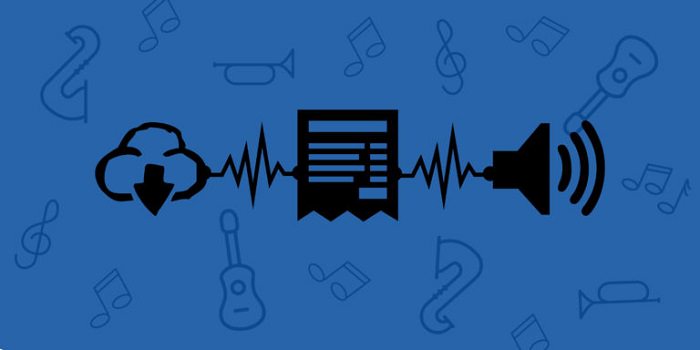The excellent business insights offered by big data has caused it to become an indispensable part of every sector, and the music industry is no exception. Since the introduction of the iPod in 2001, there has been a radical change in the way people listen to music. The introduction of big data and data mining has further changed this trend. On a regular basis, listeners generated as much as 2.5 exabytes of music data. While all of this data might not be relevant to the music industry, analyzing the data can provide relevant insights.

Raw consumer information collected via downloads, app and online searches are making a significant influence on not only which songs are marketed and sold, but the insights derived also have a decisive say in which songs become the latest hits. While definitions of what constitutes good and bad music are still subjective to individual preference and interpretation, the music industry is increasingly relying on big data to make decisions about which songs and artists are to be marketed and invested on. So, if you are planning on starting a career in the music industry, acquiring a big data certification would give you a competitive edge.
The advent of big data, data mining, data processing has caused one of the most significant shifts that the music industry has witnessed so far. By opening up possibilities that were not available before, here is how big data can impact your career:
Recommendation systems:
Big data works on massive clusters of raw data and gives relevant insights in the concerned domain. Through this clustering of data sets, big data is redefining the dynamics on which the music industry operates. It is increasingly used by streaming platforms to understand the relationship between different music genres and their listeners, thus enabling them to come up with better recommendations. However, this is just one dimension. By analyzing song, language, and genre preference, music platforms now collate individual playlists, thus ensuring maximum user engagement.
Related: Cluster Analysis, Data Visualization, Data Mapping
For instance, Pandora Media developed the Musical Genome Project that uses automated algorithms to structure music data. This data consists of as much as 450 data points that are collected with every song that is present in the database of close to 30 million songs. This data is sorted based on parameters like the style of backup vocals, the tempo of the rhythm, gender of vocalist, and the instruments used. Each of these tracks is structured among different segments to arrive at a recommendation system that is relevant to individual users.
Recording with data visualization:
While sound engineers were earlier limited to dictate recording and oversee edits, the introduction of big data in the music industry has given them a more prominent role. Now that the entire process of music recording has gone digital, the software solutions used for recording and editing music can be used for dual purposes. These software tools can also be used for data analysis, and since they are highly visual, the data visualization can take place in real time as well. Recording engineers and composers can thus simultaneously view their waveforms to analyze how their tracks are being recorded and can fix the glitches by re-recording them, in the same session.
Music optimization:
The similar rule of thumb for studying music history holds true for record labels as well. Earlier, when music was distributed through vinyl records, cassettes, and CDs, music firms faced significant problems when it came to developing an understanding of their audience. With big data and streaming of music online, these record companies can now track the listening habits of their users, thus predicting which genres would benefit them the most.
By studying consumer data about which song was listened by whom, when, and where; and coupled with the knowledge of music, record companies can now easily come up with algorithms that would optimize new music in a manner that falls in line with popular consumer demands. With these practices, it is safe to say that big data and algorithms can effectively be used to create optimized music that would be best suited to the taste of the audience.
Trend prediction:
The music industry has always relied on some level of prediction when it comes to creating songs that are on top of the Billboard charts. With big data, not only can this prediction system be optimized to create more accurate results, but it can be employed at all levels of production as well. Thus, with predictive analysis record companies can also discover the next Despacito’—all before the music is officially launched to the mass consumers.
To add to this trend, a group of researchers at the University of Antwerp created an algorithm which after analyzing listening history, could accurately predict the position that dance numbers would be ranked in the Billboard Dance Singles chart. Another instance of prediction of trends using big data was in 2013 when Spotify analyzed its users’ streaming data to predict the winner of the Grammys. The consumer data was broken down into listening habits, and the popularity of songs was calculated by categorizing data into variables of songs and albums.
As more and more users switch over to online streaming platforms from traditional methods, the amount of data related to the music industry is only going to increase. The heightened frequency of data not only leads to better recommendations and predictions but is also transforming the way companies create and record music. Big data is thus increasingly driving impact in the way the music industry operates. So, for those who have a career in the music industry, investing in a big data certification will give you the desired edge in your career.
Read about: Methods of data collection, Types of data processing